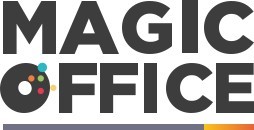
Understanding Company Vision and Strategy
Aligning with the Company's Strategic Vision
Effectively engaging senior management begins with a clear understanding of the company's strategic vision. This foundational step allows leaders to ask insightful questions that drive alignment between the organization's long-term goals and everyday operations. The role of a senior leader is to ensure that team members are aligned with these goals, fostering an environment where employees feel a shared sense of purpose and direction.
It's crucial for questions to be strategic in nature to stimulate meaningful conversations around the company's vision. For instance, asking senior leaders how they can help further the company’s long-term aspirations encourages a deeper understanding of their strategic leadership role. This, in turn, promotes a proactive culture where business decisions are informed by a clear vision of where the organization is heading.
Addressing Challenges with Company Culture
Understanding the company’s vision also involves appreciating the prevailing business culture. Leaders must ask questions centered around how the current culture supports or hinders strategic objectives. If there are challenges within the organization, addressing them through targeted questions can clarify priorities and encourage a culture shift that aligns with the strategic goals.
Moreover, questions that aim to integrate career growth and professional development opportunities can reveal areas where senior executives may need to focus more attention. This approach can lead to an enhanced work-life balance for employees, fostering a motivated and well-supported team.
By focusing on strategic questions, leaders can better navigate the organization's vision, ensuring that every team member plays a pivotal role in the success of the business. Utilizing such questions will cultivate a robust platform for employee engagement, fostering a thriving and cohesive company culture.
For more insights on improving communication regarding vision alignment and feedback collection within your team, consider exploring this blog post about enhancing feedback collection. This resource may provide useful guidance on aligning team processes with larger strategic objectives.
Navigating Organisational Changes
Addressing Organisational Adjustments with Insightful Queries
In times of organizational change, engaging senior management with the right questions can greatly facilitate smooth transitions. Understanding the challenges faced within the company and the strategies senior executives are employing to navigate these shifts is crucial. Here are some key points to consider when engaging in dialogue about organisational adjustments:- Identify Key Change Drivers: Ask senior leaders about the primary factors driving changes within the company. Understanding these drivers will help align team efforts with the overarching goals.
- Clarify Leadership Vision: Discuss how senior management envisions the future of the organization post-change. This can provide team members with clarity on their roles and expectations.
- Assess Cultural Impact: Inquire about the potential impacts of change on company culture. Considering how new strategies might affect employee engagement and work life balance is essential.
- Evaluate Decision Making Processes: Questions around decision-making processes during times of change open a dialogue on transparency and inclusivity within leadership practices.
- Support Professional Growth: Highlight the importance of strategic questions that address career growth opportunities amidst change. Understanding what professional development paths will be available can enhance morale and retention.
Enhancing Communication Channels
Fostering Open Dialogue with Senior Management
Effective communication channels are essential for aligning the company's strategic goals with the everyday actions of its team members. Engaging senior management in meaningful dialogue can help bridge the gap between leadership and employees, fostering a culture of transparency and trust. Here are some strategic questions to consider when enhancing communication within your organization:
- How can we improve our current communication channels to better support our company culture? Understanding the existing communication framework is crucial. This question encourages senior leaders to evaluate whether the current methods align with the company's long-term vision and strategic goals.
- What role does digital transformation play in our communication strategy? In today's fast-paced business environment, leveraging technology can significantly enhance communication. Senior executives should consider how digital tools can facilitate better interaction and decision-making processes.
- How can we ensure that feedback from team members reaches senior management effectively? Creating a feedback loop is vital for continuous improvement. This question prompts leaders to think about mechanisms that allow employees to voice their concerns and suggestions, ultimately contributing to the organization's success. For more insights on enhancing employee access, visit this resource.
- What strategies can we implement to enhance employee engagement through communication? Engaged employees are more productive and committed to the company's objectives. Senior management should explore ways to make communication more inclusive and participatory, ensuring that all voices are heard.
By addressing these questions, leaders can create a more cohesive and responsive communication environment, ultimately supporting the organization's strategic objectives and fostering a positive company culture.
Resource Allocation and Budgeting
Maximizing Financial and Human Resources
Effectively managing a company's resources is crucial for achieving strategic objectives. To ensure optimal allocation and budgeting that align with long-term goals, it's essential to engage in meaningful dialogues with senior management. This involves asking strategic questions that uncover insights into the organization's financial priorities and employee engagement strategies. Discuss with senior executives how the business plans to balance resource allocation while addressing challenges such as digital transformation and sustaining company culture. This process can bridge the gap between strategic decision making and day-to-day operations, leading to more informed and effective leadership. When considering questions to ask leaders about resource allocation, focus on:- How current budgeting strategies support the company's vision and leadership style.
- Whether resources are being optimally invested to drive professional development and career growth for employees.
- How to address any gaps in resources that may hinder employee engagement or affect work-life balance.
Performance Metrics and Feedback
Evaluating and Implementing Performance Metrics
Senior management plays a crucial role in defining performance metrics that align with the organization’s strategic goals. It's important for leaders to ask specific questions about how performance is measured within the company. Are the current metrics truly reflective of the employees' roles and the challenges they face? This is where direct enquiries can provide clarity.- Strategic Alignment: Leaders should ensure that performance metrics support long-term business visions and the overall company culture. Are the leaders aware of how these metrics drive or hinder employee engagement and the organization’s objectives?
- Feedback Mechanisms: Engaging senior management in discussions about feedback loops helps refine performance measurements. Does the organization have a robust system that allows leaders to gather valuable insights from team members? Open communication channels facilitate better feedback and leadership style adjustments.
- Role of Technology: In today's digital transformation era, adapting performance metrics to include digital tools can aid in better decision-making. How can technology be used to streamline the process of gathering and analyzing performance data?
- Tailored Approaches: Does the company’s performance evaluation account for individual career aspirations and professional development goals? By addressing these questions, managers empower employees to grow alongside the business, fostering a sense of career growth and organizational loyalty.
- Employee Involvement: Are team members involved in setting their own performance targets? This inclusion can lead to greater employee engagement, as individuals have a clearer understanding of how their work contributes to the larger business goals.












